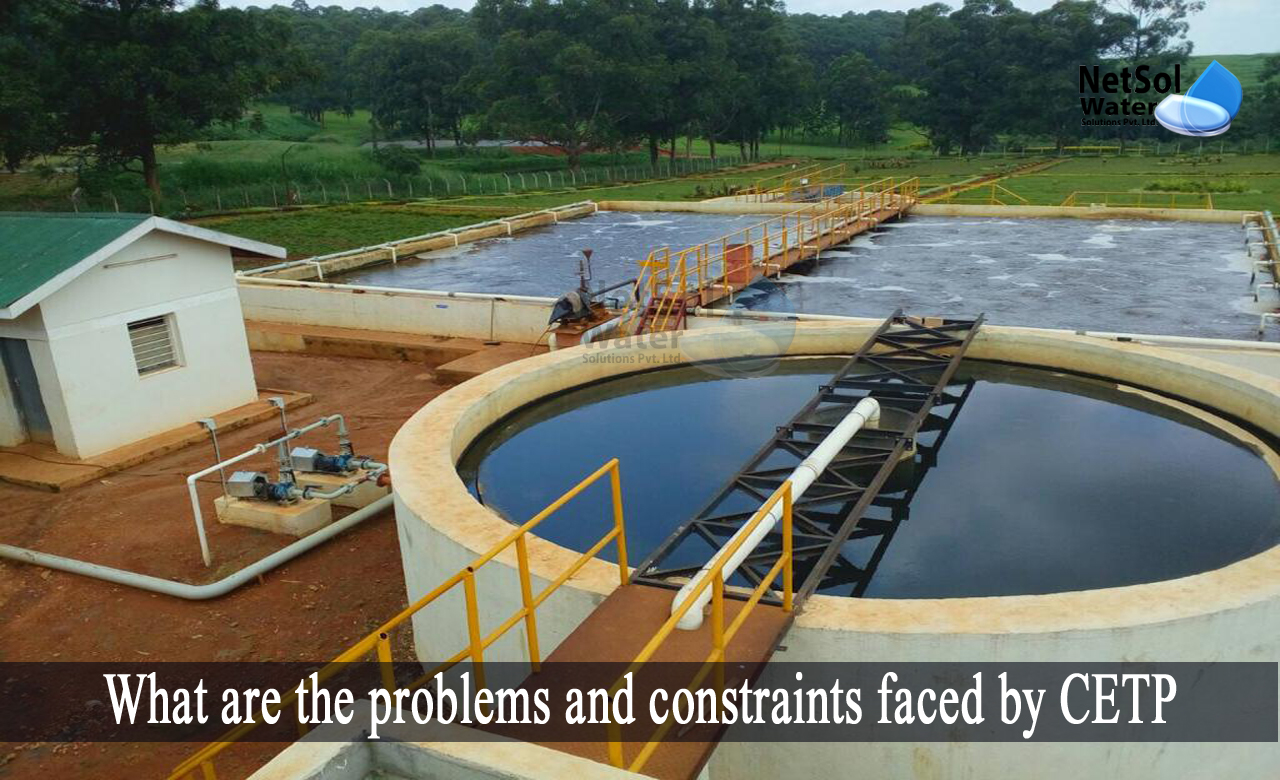Introduction
When a CETP gathers effluent from the industries, and treats it, it is generally referred to as a combined effluent treatment plant. These help to reduce effluent treatment costs, increase collective treatment, and reduce land costs, for small-scale industrial centers, which cannot afford individual treatment plants. However, these Common effluent treatment plants, face some problems and constraints, which are discussed below:
What are the problems and constraints faced by CETP?
Many factors limit the CETPs' ability to consistently meet the mandated requirements, including:
· Working on a 'one-size-fits-all' premise,
· Inadequate access to capital investments, working capital, specialized technical skills, and inconsistency in effluent quality, from member industries,
· Mismanagement of treatment units in a shared facility,
· The varying type and scope of the enterprises, as well as the unplanned addition of industries, without sufficient planning,
· There is no provision to address changes in pollutant load, and quantity at individual member industries,
· There are no separate treatment facilities to deal with hazardous and toxic effluents. Because of their comparable type of characteristics, CETPs servicing similar sectors will have higher operational simplicity, which will also enable picking the proper treatment scheme with greater confidence,
· CETPs servicing effluents from many businesses require more expertise, and experience to ensure consistent compliance with the stipulated criteria.
Chemical dangers faced in CETPs
· Chemical exposure
The greatest exposure to several chemicals happens, often during industrial activity. Chemicals enter the body through four major routes: inhalation (breathing), absorption (skin or eye), ingestion (swallowing, eating), and transplacental transfer. Most occupational chemicals have the potential to be transmitted into the air as dust, droplets, gas or vapor, or inhalation. Inhalation and skin absorption are the two most common modes of exposure, in the workplace that contribute to systemic effects. In addition, tainted food or drink in the workplace is a potential cause.
· Chemical toxic effects
Chemical toxicity can poison the body of the person who is exposed to it. Toxic chemical exposure can have acute, chronic, reversible, irreversible, local, systemic, and synergistic effects. Chemical toxicity is defined as corrosive, irritant, sensitizer, asphyxiant, carcinogen, mutagen, teratogen, or fetotoxic.
Biological Dangersfaced in CETPs
When effluents enter the body, they can cause a variety of illnesses. Examples include:
· Gastroenteritis, which is characterized by cramping, stomach discomfort, diarrhoea, and vomiting.
· Weil's disease, which is a flu-like condition that causes a prolonged and severe headache, and is spread via rat urine.
· Hepatitis, which leads to liver inflammation and jaundice.
· Occupational asthma, which leads to breathing problems, chest tightness, and wheezing, caused by inhaling live or dead organisms.
· Infection of the skin or eyes.
· Rarely, allergic alveolitis (lung inflammation) accompanied fever, shortness of breath, dry cough, and aching muscles and joints.
Hazards both ergonomic and psychologicalfaced in CETPs
These risks can be exacerbated by workplace stress. Some of the issues that might cause stress include:
· poor job,
· repetitious task,
· work that is either too little or too much,
· not enough time or excessive job training,
· picking the best individual for the job,
· bad interpersonal relationships,
· work schedules that are rigid,
· dreadful physical working conditions,
· a failure to communicate and consult,
Conclusion
Small and medium-sized businesses are not required to segregate their effluent. CETPassured wastewater treatment, results in improved pollution control. This is only one treatment facility that must be monitored for performance, by the concerned pollution control agency.
These risks can be reduced by doing the following:
- Clarity in an individual's specified aims and duties in relation to corporate objectives,
- Choosing an appropriate individual for the allocated duties,
- Prioritizing the tasks.




